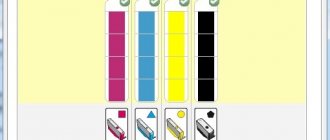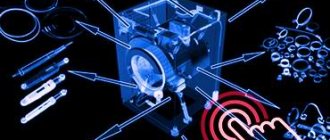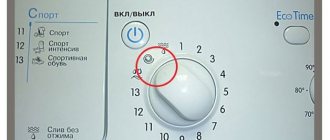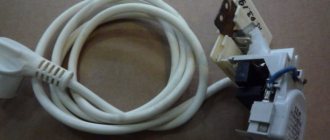How to check a camera and is it worth buying it second-hand? We will try to consider this issue in detail and give useful recommendations before purchasing.
Read to the end and you will learn how to check a used camera, and also find out in which cases it is worth contacting used equipment and in which cases it is not.
How to check a camera that has already been used
Today we’ll talk about how to check a camera that is sold not in a store, but by hand. Why do people buy photographic equipment that has already changed more than one owner?
The reason is very simple, actually. After opening the box, the camera automatically loses value.
Although, in fact, it still remains new. But not for the second buyer. In turn, this fact makes it possible for others to buy good equipment cheaper than in a store.
This is why the secondary market for photographic equipment is so popular. But we want to warn you.
If you do not know how to test a camera, then it is better to refrain from such a purchase. Or read on and find out the main nuances that are worth paying attention to.
Why do people sell their cameras? There can be many reasons for this. Let's look at the main reasons.
Reasons why cameras are sold:
- The camera is obsolete. There is a category of people who like to be in trend. These photographers regularly sell outdated equipment after the release of new models.
- The camera was simply given as a gift. The man tried it and realized that the photo was not his.
- The camera lay idle for a long time. There are options here: the photographer switched to mirrorless cameras or gave up photography.
- The photographer decided to change the system. For example, switch from Nikon to Canon or even to Sony.
- Something started to malfunction or malfunction. The camera could also have been accidentally dropped or gotten very wet. After this, many people try to quickly sell the camera to strangers in order to avoid problems in the near future.
- The camera is stolen. There is no need to continue here.
You can purchase a camera by hand in the first four cases. But we want to warn you, the owner will never tell the real reason for the sale. Therefore, you need to be very careful.
Checking the camera upon purchase
When buying a camera, new or second hand, it doesn’t matter; any sane person has a legitimate question: how to check a camera when purchasing? Of course, if this is a digital camera, then everything is quite simple, but what to do if you are buying the first DSLR in your life? Checking a DSLR camera when purchasing can cause natural difficulties. Today we will talk to you about what to look for when buying a new compact or DSLR camera. We will talk to you about how to check a used camera when purchasing it in a separate article.
Key points to note
Let's look at the three most popular questions that all buyers ask:
- Was the camera repaired? Everyone is primarily interested in the breakdown factor. Has the camera been dropped or been repaired?
- Did you wet the camera? Here we mean not only the fall into the water, but also the conditions in which it was. Has the camera been exposed to heavy rain? Did you shoot with it in severe frost? The fact is that when it is subsequently moved into heat, condensation forms, which oxidizes the contacts.
- Shutter travel. By the number of frames taken, you can determine the intensity of use of the camera. Also, by the number of times the shutter is triggered, you can approximately determine the remaining operating life. But we'll talk about this later.
Check for mechanical damage
- Scratches and chips. Carefully examine the camera from all sides and check for scratches, cracks and chips. Scuff marks are normal. You can ignore them. If you see cracks and chips, it is better to refrain from purchasing. The camera was most likely dropped or hit. Also try shaking the camera. Nothing should ring or rattle inside.
- Cogs. The presence of abrasions or scratches on the screws indicates that the camera has been repaired. In this case, you shouldn't buy it.
- Bayonet. Remove the lens and check the mounts. There should be no deformation. The presence of scratches indicates that the lenses were changed frequently. This means that the camera has been used quite often and there may be dust on the sensor.
- Battery. By looking into the battery and flash drive compartments, you can find out whether the camera has been underwater. Drowned victims often have rust or signs of oxidation on the contacts of the battery and flash drive. If at the same time it is not a native Chinese battery, the probability that you have a drowned man in your hands is almost one hundred percent. The original battery has a hologram from the manufacturer.
- Hot shoe. Scratches on the hot shoe can indicate the degree of wear on the camera. If there are too many scratches, it means you used an external flash and, most likely, the camera was used professionally. Hobbyists rarely buy flashes like this. We do not recommend buying this camera. There should also be no traces of rust.
How to check a used camera when buying for mileage
If you decide to buy a second-hand or used camera, then first of all, when checking the technical condition of the camera, you will need a laptop or computer to see the real mileage of this product; sellers like to lie to those who are not very versed in such equipment.
A special program downloaded from the Internet will show you how many pictures were taken during the entire period of being in the hands of the seller. But before that, you will need to check the camera for mechanical damage, chips, scratches, and abrasions. Just think, if the device fell, what happened inside it.
If the camera falls, at least the soldering of the microcircuits on the system board could fall off, a crack could appear on the mirrors, by the way, when checking, be sure to remove the lens and check if there are cracks on the mirrors, if there are any abrasions, or maybe the mirrors are stained.
The next step is to check the battery, to do this you need to ask the seller to fully charge the camera to 100 percent. Then you turn on live view and start shooting video for about ten minutes or watch the video for the same amount of time.
The battery discharge standard for a ten-minute video should be approximately 5-8% out of 100, if more, then you can safely drop the price tag on the purchase of a new battery. Next, we also check the shooting speed and freezing when processing the captured photo.
If you hear extraneous noise during high-speed shooting, then most likely the shutter has failed and the camera has already reached the end of its useful life; on a regular SLR camera, the shutter life is 100,000 frames. Freezing when processing a captured image also indicates problems in the memory chip.
How to check the mileage of a camera
How to check the mileage of a camera? The lifespan of a camera is usually measured by shutter travel. More precisely, the number of its operations or, in other words, the number of photographs taken.
Since the bolt is the first thing that breaks most often, it is the one that gets the most attention. Different models have different resources. For professionals it can be measured at 100-200 thousand, and for amateurs 30-50 thousand.
But in practice, everything is not so predictable. It happened that cameras could withstand 600 thousand shutter releases and a million. And it happened that they broke down without even walking ten thousand.
It's a kind of lottery. If, according to the seller, it turns out that half of the conditionally guaranteed mileage has already been completed, it is better not to buy such a camera.
Digital SLR shutter
You can also check this yourself. Ask me to send you the raw frame. Each photo has EXIF data. There you can see the number of frames captured.
This is done in many photo viewing applications. For example FastStone Image Viewer or IrfanView.
If this is difficult for you, there is a service called camerashuttercount.com where you just upload a photo, and it will show the number of photos taken, as well as the camera model.
For mirrorless cameras, shutter mileage is not that important. It's electronic there. But the number of frames taken indicates the intensity of use of the camera.
Check the mileage of the camera
If the owner took good care of the camera, then it works great beyond the resource recommended by the manufacturer. However, when buying a used DSLR, try to check the shutter count to assess how old it is.
The verification method depends on the model you are going to buy. When going to inspect the camera, be sure to find out on the Internet how this can be done on the selected model, and what is the service life of its shutter. This way you will avoid buying a DSLR whose service life is coming to an end.
How to check your camera for dead pixels
Dead pixels are non-working pixels. They can be black or colored.
Dead pixel example
If a pixel is stuck inoperative, it will appear black. If half-opened, then colored. When open, the dead pixel will be white. They can be either on the camera matrix or on the display. The most unpleasant thing is when they appear on the matrix.
In addition to dead pixels, there are also hot pixels. These pixels are always red, blue and green. Their difference from broken ones is that they can appear and disappear.
When, at high ISOs or slow shutter speeds, the sensor heats up, hot pixels can appear. Their appearance depends on the temperature of the matrix.
And the most unpleasant thing is that they will have to be removed in each frame using a graphics editor. When there are thousands of photos, this is a very unpleasant task.
You can check your camera for dead pixels by taking one frame at a shutter speed of 1/30 at ISO 100 with the lens cap on. At the same time, defocus the lens.
Checking the camera
So, we're in the store. In front of us is a box with the desired camera. How to check the camera yourself? Let's figure it out.
Visual inspection
Inspect the box: there should be no mechanical damage. Find the warranty card in the box. Check that this is the official warranty card of the manufacturer, and not a guarantee from a third-party service center, as is often the case with unofficial “gray” supplies of photographic equipment. Check the serial numbers on the packaging, camera and warranty card. Check the package. There should be no traces of use on the equipment. Everything should be wrapped in bags. There should be no fingerprints on anything, much less scratches. If traces of use are found, do not listen to the seller’s comments, but simply request another copy without traces of use.
If you buy a camera with a lens, check the lens lenses for scratches or dust inside. Install the lens on the camera. There should be no play: the lens must be fixed tightly.
Testing camera mechanics
After the visual inspection, we move on to testing the camera.
Install the battery and memory card, turn on the camera. If the battery is discharged to zero, it is worth charging it at least a little. Take a few test shots in automatic mode. Check if the built-in flash is working.
Check operation during continuous shooting. Turn on continuous shooting, hold down the shutter button: the camera will continuously take pictures while the button is held by the photographer. Take a small series of pictures - five or six. This way we will check the functionality of the camera shutter.
A menu with a selection of burst shooting settings that appears after pressing the button on the left. Select the “continuous fast” option.
Checking the camera for defective pixels
It is important to check the camera sensor for dead and hot pixels. What are dead and hot pixels? You may have already encountered them on computer monitors. A dead pixel is a non-working element of the camera matrix. In photographs it will appear as a bright dot in all photographs. A hot pixel will not be noticeable under standard shooting conditions, but when shooting at a slow shutter speed or high ISO, it will turn into a colored dot in the photo. The appearance of a certain number of hot pixels is acceptable when shooting at high ISO values and when using multi-second shutter speeds, but it is a warning sign if they appear already at fairly low ISO values and when using shutter speeds around 1/60 s.
An example of defective pixels. They are especially noticeable against a black background.
How to check your camera for dead and hot pixels? Here is a detailed algorithm of actions:
- Cover the camera lens with a cap. Shooting must be done with the lid closed to get a black frame. On a black background, all defective pixels will be clearly visible.
- Turn on your camera's shutter priority mode (S).
- Set the image quality to JPEG at maximum quality.
Menu for selecting image quality in the Nikon D5300 camera
- Disable autofocus: it will not allow you to take a picture with the lens cap closed.
To disable autofocus, move the switch on the lens to the “M” - “Manual Focus” position.
- Set the shutter speed to 1/25 sec and minimum ISO. Typically this is ISO 100.
Shooting parameters displayed on the Nikon D5300 camera screen
- Take a photo. Examine it at 100% scale (this is important: otherwise the defects will not be visible). If extra dots appear on the black field of the photo, you should refuse to purchase this copy of the camera.
- Now let’s complicate the task for the camera: lengthen the shutter speed to three seconds (on the camera screen it can be indicated as 3”) and raise the ISO to 800 units.
Shooting parameters displayed on the Nikon D5300 camera screen
- Let's study the resulting frame. It is possible that hot pixels will appear on it: multi-colored dots. If there are one or two of them, it’s okay. If the bill goes into the tens, you should refuse to purchase this copy of the camera.
Examples of test images. Such images must be obtained by shooting with the lid closed at the above parameters. They must be viewed at 100% magnification to see the difference.
A photo with defective pixels
A photo without defective pixels
View illustrations in full scale.
By the way, defective pixels can be not only on the camera’s matrix, but also on its screen. Look closely at the camera's LCD screen to see if they are there.
How to check dust on a camera sensor
How to check dust on a camera sensor? Yes, very simple. Set the aperture to f11 or f16, photograph the sky or a very light object that is uniform in tone and color (for example, a wall). Next, carefully examine the photo. All the black dots are the same dust on the matrix.
Even if there are a lot of them, don’t be afraid. Dust can be removed from the matrix. However, if you do not want to take the camera to a service center for cleaning and pay additionally for this, it is better to refrain from such a purchase. We do not recommend cleaning the matrix at home.
An example of dust on a camera matrix (running version)
A large amount of dust inside the camera indicates that there is dust on the shutter too. This factor additionally affects the service life of the shutter towards its reduction. This is something to think about.
How to check camera electronics
Test all buttons and wheels. Take pictures in different modes, adjust white balance and exposure. Check autofocus and browse the camera menu. Everything should work clearly and smoothly. No glitches or delays.
If possible, agree with the seller to return it in a few days if you don’t like something. During this time, actively take photographs. If something is wrong with the electronics, it will definitely come out during this time.
Pros of buying a used camera:
- Opportunity to buy a cooler camera for the same money
- Saving money
- Money back on next resale
Disadvantages of buying a camera second-hand:
- There is no 100 percent guarantee. It's a lottery after all. Even after checking in the service, no one will give a full guarantee that the camera is fully operational and without surprises.
- Unpredictability. You can't guess how long the camera will last. It may break down in a month, or it may work longer than it should.
- Risk of buying a stolen camera. Without a box, a warranty card and access to the database of stolen equipment, it is quite difficult to determine whether the camera is stolen or not.
Whether to take risks or not, everyone decides for themselves.
How to find out if a camera is stolen:
- The serial number on the camera must match the number on the box
- In addition to the box, all cables and instructions must be present.
- You can get the serial number from the database of stolen photographic equipment
- The serial number must not be erased
Check the video mode
Record and watch several videos to make sure the camera is recording video and audio consistently.
If you use used photographic equipment, share your purchasing and testing experience in the comments.
We will definitely supplement the article with your advice. More useful information and news in our Telegram channel “Lessons and secrets of photography”.
Subscribe! Tags: Choosing photographic equipment, Cameras, Photography equipment, Photo tips
About the author: spp-photo.ru
- Related Posts
- Practical Photography Tip #2: Use a Plastic Cup for Macro Photography
- 6 tips for photographing plants
- 22 Questions You Should Ask Yourself Before Preparing Your Portfolio
« Previous entry
Who should you definitely not buy photographic equipment from?
Even if, after checking, the camera seems worthy of purchase to you, you should think about whether you are buying it from the right person.
There are two categories of people from whom it is undesirable to buy. Simply because the percentage of the risk of getting into trouble is greatly overestimated. Even if everything looks good on the outside.
From whom it is not advisable to buy a used camera:
- From people offering to buy a camera right on the street. In such cases, they offer you 100% stolen photographic equipment.
- From professional photographers. Even if the warranty period has not yet expired, the camera may already be at the finish line of its lifespan. Commercial photographers shoot a lot and often. For example, a wedding photographer on average (for a full day of shooting) takes 3000 - 5000 photographs. And a sought-after photographer can photograph up to 40 weddings per season.
Buying a used camera from a pawn shop is not a good idea. The risk of acquiring stolen equipment is very high.










